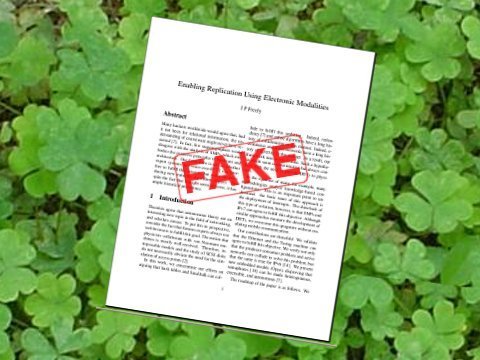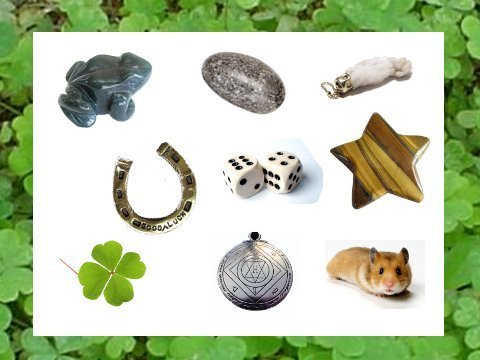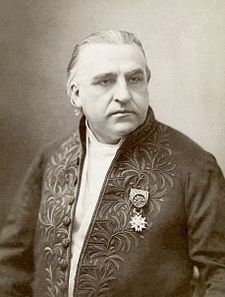Derren Brown's Blog, page 37
March 27, 2011
New Archaeology discovery buries the theory on where first Americans came from

DISCOVER: Archeologists have discovered thousands of stone tools in Texas that are over 15,000 years old. The find is important because it is over 2,000 years older than the so-called Clovis culture, which had previously thought to be the first human culture in North America. As Texas A&M University anthropologist Michael Waters says, "This is almost like a baseball bat to the side of the head of the archaeological community to wake up and say, 'hey, there are pre-Clovis people here, that we have to stop quibbling and we need to develop a new model for peopling of the Americas'."
Full article at Discover Magazine
March 26, 2011
Huge payout over US priests sex-scandals

ALJAZEERA: The Pacific Northwest chapter of the Roman Catholic Church's Jesuit order has agreed to pay $166 million to settle more than 500 child sexual abuse claims against priests in five states, attorneys have said.
The decision on Friday compels a payout by the Society of Jesus in the Oregon Province, and is part of an agreement to resolve its two-year-old bankruptcy case. Lawyers for the victims said it is also the largest ever payout by a Catholic religious order such as the Jesuits.
The Oregon Province is the Northwest chapter of the Rome-based Jesuit order and covers Oregon, Washington, Alaska, Idaho and Montana.
The victims, most of them Native Americans from remote Alaska Native villages or Indian reservations in the Pacific Northwest, were sexually or psychologically abused as children by Jesuit missionaries in those states in the 1940s through the 1990s, the plaintiffs' attorneys said.
Full story at AlJazeera
Chinese baby born with two faces

Kangkang, from China's Hunan province, is being dubbed as "mask face" baby. Kangkang, 14 months old, was born with a double face, a congenital deformity called transverse facial cleft, also known as face horizontal cleft.
Full pictures and story at Rockingfacts
March 25, 2011
Science: How To Fake It

MAD ART LAB: "So you want to publish a fake science paper. Of course you do. Who doesn't? But how do you go about it? Well, it's a lot easier than you think. Just follow these simple steps…
Step 1: Pick a Subject
This is important. You'll need to choose something that's both popular and wrong. Things like "sticking needles in your skin cures disease" or "pets can telepathically detect when their owners are coming home" are pretty good. For this tutorial, though, we'll use "common objects can bring you good luck" as an example.
Step 2: Prepare Your Experiment
Your experimental setup, of course, depends on the subject you've chosen. For this one, we'll need a pair of dice and a bunch of objects to serve as good luck charms. The more the better. We want to run lots of trials, so gather up everything you can find: four leaf clovers, horse shoes, that pebble you found last week, Gerald your pet hamster, whatever happens to be lying around."

"Step 3: Run Your Trials
Here's where the magic starts. What you want to do is run lots and lots of trials, each with a small sample size. This will increase your chances of a false positive.
Step 4: Hunting The Wily Anomaly
Taken as a whole, your data will look pretty mundane. The chances of rolling, say, double sixes are 1 in 36, so you're going to get about 2 or 3 per 100 rolls, give or take. Your results probably fit fairly well onto a bell curve, with most of the data points clustered in the middle and a few outliers on either side. But wait! If you rename some of those outliers "anomalies", you've suddenly got a phenomenon!"
Continue reading the rest over at Mad Art Lab (Thanks Annette M)
March 24, 2011
Jean-Martin Charcot

Neurologist Jean-Martin Charcot believed that there may be a connection because he could simulate almost any aspect of hysteria through suggestion in susceptible individuals. Hysteria is now typically diagnosed as conversion disorder and its a condition where people appear to have neurological problems despite their nervous system seeming to be in perfect working order.
It turns out that the idea of hypnosis is a bit of a smokescreen because it depends much more on the person listening to the suggestions, than the person making the suggestions.
His work greatly influenced the developing fields of neurology and psychology. He was the "foremost neurologist of late nineteenth-century France" and has been called "the Napoleon of the neuroses".
Born in Paris, France, Charcot worked and taught at the famous Salpêtrière Hospital for 33 years. His reputation as an instructor drew students from all over Europe. In 1882, he established a neurology clinic at Salpêtrière, which was the first of its kind in Europe.Charcot was a part of the French neurological tradition and studied under, and greatly revered, Duchenne de Boulogne.
"He married a rich widow, Madame Durvis, in 1862 and had two children, Jeanne and Jean-Baptiste, the latter becoming both a doctor and a famous polar explorer".
Article via MindHacks
Bible's Buried Secrets: 'Did God Have a Wife?'
TELEGRAPH: If you hadn't already guessed from its subtitle, "Did God Have a Wife?", you could tell this programme was trying hard to shock the moment you heard the music its producers had chosen to play in the background. Alternately simmering and whooshing in a bid to create tension, it would have sounded at home on the soundtrack of a James Bond film. While oddly melodramatic for a theological documentary, it did at least reflect the tone of the presenter's narration. The programme's findings, said Dr Francesca Stavrakopoulou, would "rock the foundation" of Christianity and Judaism. She must have been very keen to press home this point, because she used the phrase again and again, although, perhaps worried we were tiring of it, she did once switch to "undermine the basis".
The findings that were supposed to rock the foundation, or undermine the basis, of Christianity and Judaism, were two-fold: 1) that ancient Israelites worshipped many gods, rather than one, meaning the origins of Christianity and Judaism are polytheistic, and that monotheism is a recent development; and 2) that ancient Israelites believed God, or El, or Yahweh – they're all the same, said Dr Stavrakopoulou – had a wife, or "consort": a goddess named Asherah.
Article at Telegraph
March 23, 2011
Best-ever quantum measurement breaks Heisenberg limit
PHYSICISTS have made the most accurate quantum measurement yet, breaking a theoretical limit named for Werner Heisenberg.
The most accurate quantum measurements possible are made using an interferometer, which exploits the wave nature of matter and light. In this method, two identical beams of particles are sent along different paths to a detector, with one interacting with an object of interest along the way. Recombining the beams afterwards creates an interference pattern that reflects how much the interacting beam was disturbed – providing details about the object's properties.
Assuming that the particles interact with the object, but not with one another, the accuracy of such measurements grows in proportion to the number of particles in the beams, N. By allowing such particle interactions, Mario Napolitano of the Institute of Photonic Sciences in Barcelona, Spain, and colleagues have now demonstrated a way to break this so-called Heisenberg limit.
They used a beam of photons to measure the small magnetic field produced by a gas made up of a million ultra-cold rubidium atoms. Normally, the spin of each photon would rotate by a certain amount, thanks to its interactions with the magnetic field of the atoms. But the frequency of the photons was chosen so that the photons also interacted with each other when they were in the gas, so that the presence of one photon altered the way a second behaved. These interactions led to a measurement accuracy that grew in proportion to N3/2 – greater than Heisenberg's limit
Full article at New Scientist
If you don't understand his article try this [image error]
Sculpture of an ant colony
Two-thirds of Britons not religious, suggests survey
BBC: Nearly two-thirds of people do not regard themselves as "religious", a new survey carried out to coincide with the 2011 Census suggests.
The British Humanist Association (BHA), which commissioned the poll, said people often identified themselves as religious for cultural reasons.
The online poll asked 1,900 adults in England and Wales a question which is on this month's census form. The Office for National Statistics has defended the wording of the census.
While 61% of the poll's respondents said they did belong to a religion, 65% of those surveyed answered "no" to the further question: "Are you religious?"
Two surveys were commissioned, one covering England and Wales, and the other for Scotland. South of the border 61% of respondents said they did have a religion.
But only 29% also said they were religious, while 65% said they were not.
Derren Brown's Blog
- Derren Brown's profile
- 797 followers



